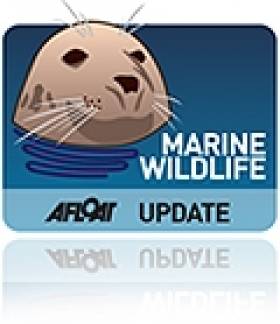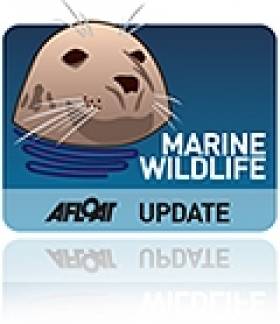Displaying items by tag: seals
Fears Over Illegal Cull as Seals, Dolphin Die on Waterford Beach
#MARINE WILDLIFE - Fears are growing of an illegal cull of marine wildlife after a seal and dolphin were discovered dead on a Waterford beach - just hours after two seals were found dying from bullet wounds in the same location.
TheJournal.ie reports that the wounds on the two animals found on Tramore Beach on Thursday are also believed to be from gunshot.
Two grey seals were euthanised the previous evening after they were discovered gravely injured with "horrific" wounds on the same beach.
A spokesperson for the Irish Seal Sanctuacy (ISS) has called for a post-mortem of the animals to determine the exact cause of death - but pointed the finger at an illegal cull allegedly carried out by local fishermen.
"We’re not against a properly regulated cull," said the ISS's Johnny Woodlock, "but it’s the guy who goes out with a shotgun and takes potshots, that’s what we’re against.”
TheJournal.ie has more on the story HERE, including an image that many may find distressing.
Concerns Over Seal Deaths in Donegal
Seven dead seals washed up in Donegal are believed to have died of natural causes - but concerns over a pattern of seal deaths nationwide remain.
As the Donegal Democrat reports, the seven grey seals - which are a protected species - were found beached along with a dead dolphin in the Rosberg area.
A ranger with the National Parks and Wildlife Service confirmed that none of the marine animals had been shot.
But Pauline Beades of the Irish Seal Sanctuary said the find was just one in a series of reports of "strange" seal deaths around the country.
“You don’t find three, four, five animals dead on a beach," she said. "I would be very concerned that this is not a normal occurrence.”
It is not yet known if a post-mortem will be carried out in the dead seals, but members of the public are encouraged to report any similar finds as the thocine distemper virus has been responsible for seal deaths in the past.
Beades said that grey seals are now having their young, and asked the public to keep an eye out for seal pups and report anything that looks suspicious in the area.
The Donegal Democrat has more on the story HERE.
Howth Ban on Seal Feeding 'Threat to Tourism'
Feeding harbour seals could land Howth visitors with a fine for thousands of euro, according to a recent letter in The Irish Times.
Milo Kane writes of a new notice placed near the west pier by harbour officials which "threatens a draconian €5,000 fine on any person feeding seals from the pier".
He also claims that local traders and harbour staff he spoke to could give no "commercial or biological reason" for the ban, which he says will ultimately result in fewer visitors to Fingal.
We're keen to hear from anyone who know the reason behind this new sign in Howth. Leave a comment below if you know the answer.
Sailing School Navigates Beyond the Gloom
The Principal John Moore has discounted all prices by 20 to 30%. All 2009 sailors returned in 2010 and brought friends with them. The French network of the newly appointed Director of Sailing Hugues Traonmilin has brought French families to the island and the French sailors were mixed with the Irish and British children and adults with great success. In addition to a busy summer season, 60 students of a South East College came for the very first time to the Sailing School in March 2010 as part of the Transition Year programme. They were hosted with full board accommodation at the Sailing School Guest house.
Definitely the location of the Sailing School plays a big part in this success story. Heir Island is located in the middle of Roaring Water Bay half way between Schull and Baltimore. Whatever direction you sail from the Sailing School beach, you'll encounter wonderful maritime landscapes and crystal clear waters. The Topaz dinghy fleet may sail to 3 or 4 different sandy beaches on one sailing day. The 3 Dublin Bay Mermaids sailing in flotilla explore the surrounding islands of Castle Island, Sherkin Island, the 3 Calves Islands and of course the Carthy's Islands to visit the seals colony.
Such a fantastic location has orientated the programme of this Sailing School towards the "Adventure" courses of the Irish Sailing Association. The school offers Adventure 1 & 2 courses as their "speciality" course.
2011 perspectives are already very encouraging with a second college to be hosted in Spring for a 10 day transition programme meanwhile the first one is returning after excellent feedback of the 2010 students and teachers. Being a family run business makes this small company very flexible and the range of their activities covers young sailors from 8 years old to adults, groups and families, on dinghies or on a traditional Heir Island Lobster Boat, and on kayaks if you don't want to sail. Also as a qualified Yachtmaster Instructor, the director of sailing has facilitated individually tailored sail training for yacht owners aboard their own yacht, an option that has proven both practical and successful.
More information HERE.
Erris Seals Back in the Wild
Whitecoat seal pups Snowy and Cecil were finally returned to the wild on Tuesday after their original Saturday release was postponed.
The two seals, who were reabilitated by the Irish Seal Sanctuary at Courtown Harbour after being found on the Erris Peninsula last October, were successfully released from Blacksod Point.
Mayo Today has photos of the release HERE.
Seals Could Be Trained to Find Bodies in Water
The family of a drowning victim are exploring the idea that seals could be utilised to recover bodies lost in rivers or at sea, The Clare People reports.
Brian Mooney - father of 31-year-old Brecan Mooney, whose body was never recovered after falling into the River Lee in Cork last November - said he had been in contact with the Irish Seal Sanctuary about the potential for seals to be trained to locate bodies in the water.
“We’re looking at the possibility of training seals to find bodies," he told The Clare People at the inquest into his son's death in Cork last week. "It’s never been done before anywhere, but they think there is a real possibility it could be done.”
Grey Seal Gets a Big Send Off
Last week saw the Irish Seal Sanctuary celebrate the release of Debbie, the first grey seal to receive care at the group's Courtown Harbour facility.
Photos of the release in Tramore are available at the Irish Seal Sanctuary's website HERE.
The sanctuary also last week welcomed its latest addition, a whitecoat pup named Pinky from the Belmullet Peninsula in Co Mayo.



























